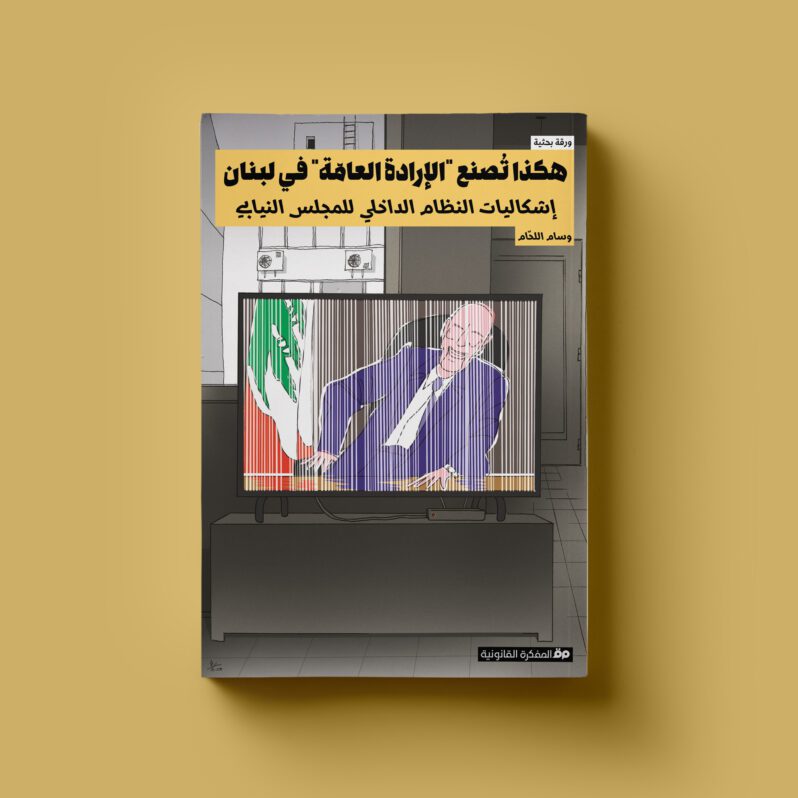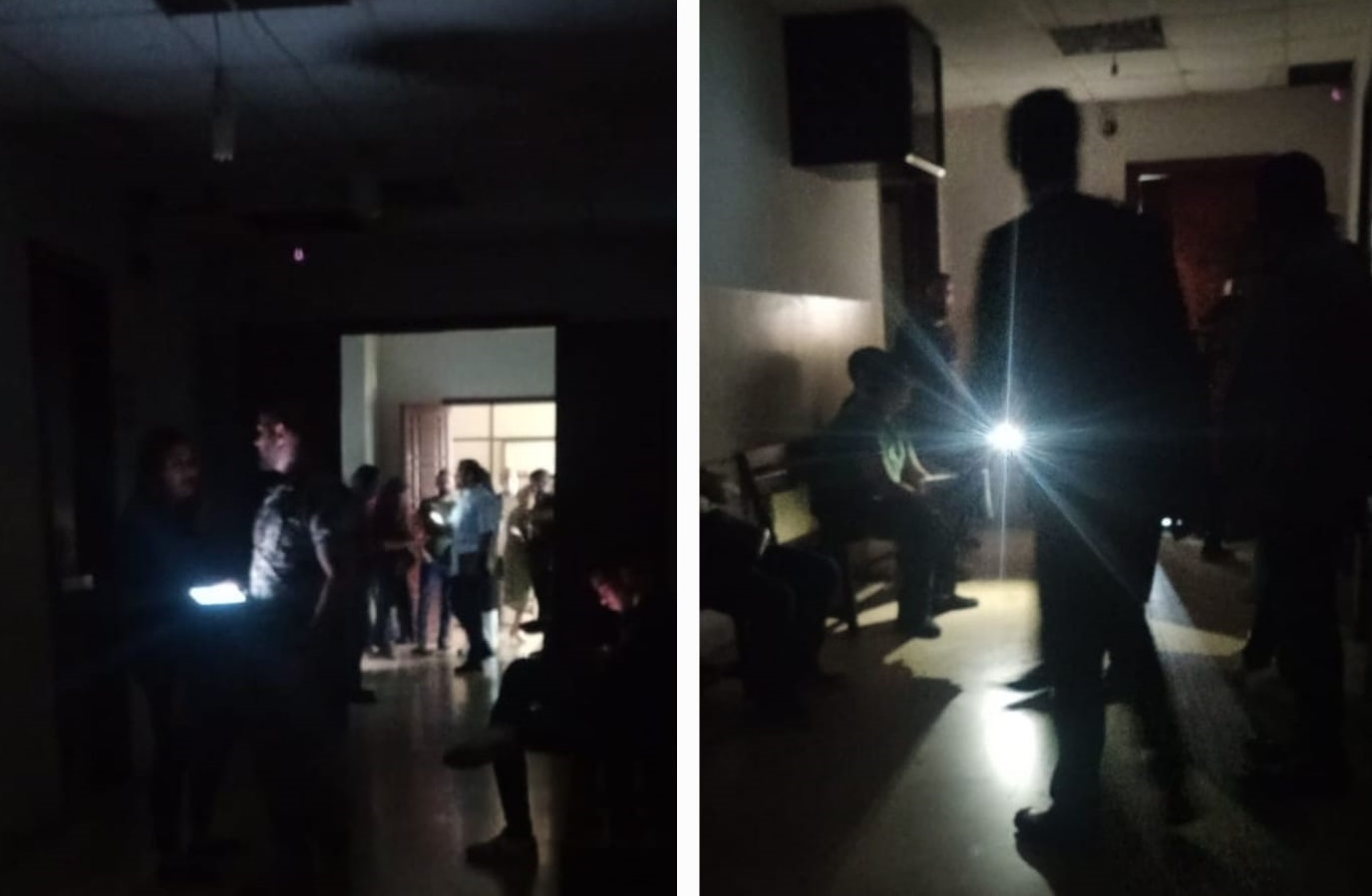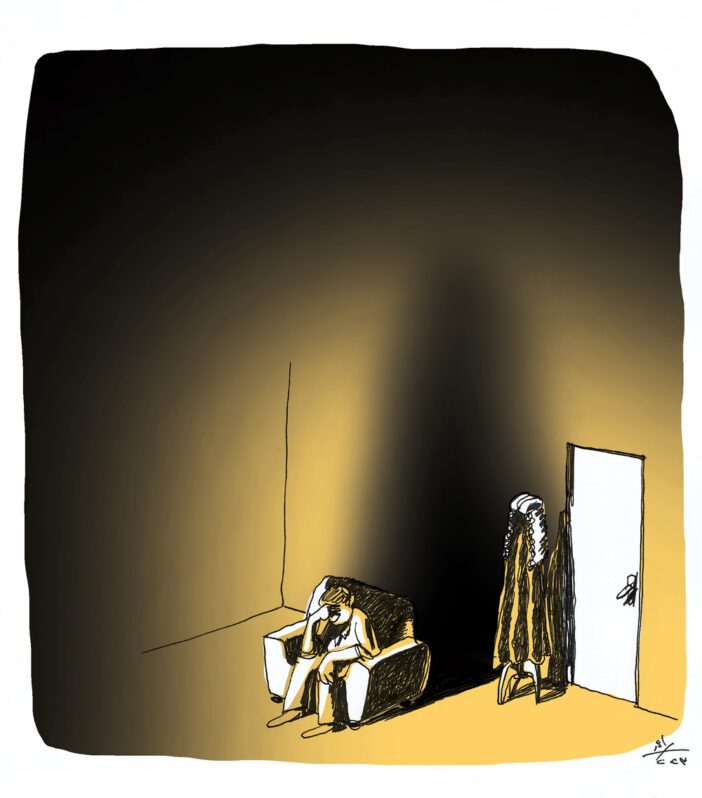When the Relatives of the Missing Take Their Cause to Court

On March 4, 2014, Lebanon’s State Council issued a historic ruling granting relatives of people that went missing during the civil war “the right to know” [about the fate of their missing].[1] The ruling was the culmination of a series of court cases initiated by the organizations representing the relatives as part of a litigation strategy aimed at consecrating this right. This article will discuss the various steps taken in the course of this strategic litigation, which may serve as a case study of public action. It will address the motives for adopting strategic litigation and effectively transferring the issuefrom the political arena to the judicial arena, the criteria used and the considerations made in the selection of court cases, and the working methods employed.
Shifting the Issue From Futile Political Dialogue to the Judicial Arena
Clearly, since the civil war ended, thecause of missing persons’ relatives has faced fundamental political obstacles. For two decades, the political class has employed twin discourses aimed at stifling the issue.
One discourse has sought to delegitimize the relatives’ demand to know by arguing that the missing persons have, according to all indications, been killed and that further inquiry would threaten civil peace without yielding any results. In this vein, the admissions that some political leaders made about having killed all persons detained by their militias seemed to be aimed more at silencing missing persons’ relatives than confessing guilt, or apologizing to the victims. Their message seemed to be “We killed them all, so continuing with your demand is senseless”. Furthermore, the political authority’s position on this matter have been based on unsubstantiated preconceptions about security risks. The most concerning aspect of this discourse may be that, although most of the political class claims to sympathize with the families’ demands, it portrays these demands as a direct threat to civil peace.
The other discourse has sought to induce people to have their missing relatives declared dead by easing the process of declaring deaths in absentia. In particular, this discourse is manifested in themandating reasons of law 15-5-1995, which reduced the period after which a missing person can be legally declared dead from 10 years to 4 years. After mentioning the psychological suffering of the missing persons’ families, the law adopted a solution in total contrast with the supposed desire to resolve this suffering. The acknowledgement of the families’ suffering, instead of acting as a precursor to an acknowledgement of their right to know, acted as a mandating reason to hastily settle the missing persons’ fate legally by reducing the time that must lapse before declaring them dead. “The families, presumably, are thereby psychologically relieved, for they no longer think that their absent sons and daughters are still alive, with the psychological pain that accompanies these perverse circumstances.”
Even in the few instances in which the authorities formally complied with the demand to know, they then circumvented this right and hollowed out its meaning and effect. One example is the establishment of the Official Committee of Inquiry to Investigate the Fate of Kidnapped and Missing Persons (hereinafter, “Committee of Inquiry”). To demonstrate that all of the missing are probably dead, the Committee of Inquiry reported that a number of mass graves exist without taking any measure to open these graves or determine the fate of individual persons. Thus, the Committee’s purpose was apparently not to determine the unknown fate of missing persons through investigations, but to impose a specific, predetermined fate (death) upon the missing, irrespective of investigations.
The state’s discourse became clearer when a second committee, the Commission for Receiving Complaints from Families of the Missing, was appointed in 2001. This Commission’s mandate was restricted to cases in which evidence of living missing persons was available. Thus, the state evaded its responsibility towards those [where no such evidence had yet surfaced]. It thereby sent the message that there is no point in expending any effort on such cases, because the drawbacks of doing so (the threat to civil peace) greatly outweigh the benefits (the discovery of corpses). The responsibility that the state acknowledged in uncovering the fates of the missing appeared to stem not from their relatives’ right to know, but from the right of living citizens to their state’s protection. Using this logic, the state can turn a blind eye to the dozens of mass graves, which are within its reach, and limit its role to investigating the fates of persons who are probably outside of the country and therefore beyond its reach. In other words, the state professes its responsibility in cases that it can then disavow on the pretext of force majeure. In this regard, some of its correspondences with the Syrian government appear conclusive. For example, the investigations dossier includes a letter enquiring about certain missing persons sent by the-then Lebanese Minister of State for Administrative ReformFouad Saad to the late Major General Ghazi Kanaan, Syria’s point man in Lebanon, on August 9, 2002; Saad received no response to this letter and nothing more came of the matter.
While some political forces have at least verbally supported the missing persons’ cause, government consociationalism has, on these rare instances, resulted in the abortion of any positive development.
Consequently, the families have found it impossible to extract a political recognition of their right to know, or to confront the political considerations that block their demands for this right. On the other hand, in the two decades following the civil war, the rights discourse on missing persons issues witnessed international progress. This progress initially took on the form of the Declaration on the Protection of All Persons from Enforced Disappearance, issued by the United Nations General Assembly in 1992. It continued with the General Assembly’s adoption of the draft for the International Convention for the Protection of All Persons from Enforced Disappearance and its call for member states to sign.
Hence, after two decades of failure, the relatives of the missing in Lebanon needed to shift their action away from addressing political authority, whichis governed by political interests and popular concerns, and towards addressing legal authority, which is governed by the language of rights; and, more specifically, towards the judiciary. By doing so, they could overcome the stagnancy and general assumptions of the former and benefit from the presumed equanimity of the latter. Their cases confronted judges with an obligation to respond to their demands on the basis of legal logic alone. In this sense, the cases differ from political demands, which the authorities can still ignore or respond to on the basis of political arguments that may completely deny basic rights. The best evidence of this difference may be the manner with which the State Council dealt with the argument that handing over the investigations dossier threatens civil peace in its 2014 ruling. The ruling considered the argument precarious and ultimately unproductive as the right to know is a natural, non-derogable right. The shift to the judicial arena is also encouraged by the successes in this arena experienced by a number of groups – particularly homosexuals and refugees subjected to arbitrary detention, after they had faced political and socialobstacles no less significant than those facing the relatives of missing persons.
Additionally, resorting to the courts will enable the families to take advantage of adversariality -a binding principle of court procedure- in order to participate actively and directly in investigations. Such participation was largely absent from the work of the committees formed by the governments of Selim Hoss (1999), Rafic Hariri (2001), and Fouad Siniora (2005). It may also generate a dynamic between the parties concerned with the missing persons (the state, the embroiled political parties, and the owners of land on which mass graves are suspected to exist), such that they too find themselves obliged to respond to the claims put to them, and perhaps help find a solution to the issue.
By contrast, there are two objections to taking the court case approach.
1. The impact of these court cases.If the cases succeed, their practical effect remains restricted to a limited number of instances, thus scarcely compensating the relatives of missing persons for their damages. Although this objection is sound, it ignores the symbolic dimension of such a success. In light of the political impasse, these cases may be the single pebble disturbing the stagnant water. They cast doubt over a regime based on erasing memory. Furthermore, if the cases succeed, they have an enormous effect in legitimizing the relatives’ demands, as exemplified by the State Council ruling. For parliamentarians, this ruling was a key impetus for introducing the bill that the relatives of the missing had prepared.
2. The possibility of losing the cases, which could negatively impact the legitimacy of the relatives’ demands.However, this objection can be overcome using a strategy that keeps the fight to consecrate the right going by bringing consecutive cases before a number of judicial authorities. Thus, each court case becomes a platform for raising the issue of the victims’ rights without ending the issue in the event of its failure. While a failure is just another indicator that the memory of the victims is being erased, a win is a historical coup against the positions taken by the entire political class. A comparison between the consequences of success and failure in court renders this objection a marginal one.
A Strategic Plan: Selecting the Right Case
The question of which legal pathway is most appropriate for a given cause is a pivotal in strategic litigation work. The aim of strategic litigation is not personal gain, but social impact. To achieve this aim, a legal strategy was developed for the relatives of the accused.[2]In practice, it acted as a roadmap for initiating proceedings. Among the most important questions that needed to be asked in this regard were those relating to the nature of the claim, the party instigating it, and the judicial authority before which it would be brought.
The strategy was based on the following four considerations.
1. The aim of the intervention is to establish the right to know and hence to restore the rights of the victims, not to enact criminal accountability. This consideration stems from the message that the legal cases send to the community: it should ease the concern about disrupting civil peace as well as reduce the already enormous opposition. This consideration also accounts for operational factors, namely, the difficulty of providing definitive evidence of kidnappings and detentions decades after they occurred makes proving criminal cases problematic.
2. The intervention should occur via representative groups for relatives of the missing, rather than via individuals. The aim is to use the cooperative framework to strengthen solidarity between the families in their common claim, and to avoid charging individual families with cases that may place greater burdens upon them. Hence, the strategy contained advice for initiating cases to obtain documents that concern all missing persons (e.g., the investigations dossier), and to define and protect the locations of mass graves.
3. In the initial phase, cases that revolve around the principal legal issue, not debatable facts, should be initiated. In this respect, the conclusions of the Committee of Inquiry, particularly those that named some of the mass graves, appeared to be an important basis for initiating cases. The point of this consideration is to not waste the litigation opportunity on a debate about the veracity or lack of veracity of a certain fact. Rather, the goal is to confront the judge with an obligation to examine the legality of the right to know.
4. Cases should preferably be brought before various judicial authorities in order to increase the chances of success. In this respect, cases can be initiated in the Summary Affairs Court to attain rapid results while other cases are also being brought before principal courts (i.e., high courts such as the State Council) to ensure that the right is consecrated in the long term. Similarly, a plan that will initiate successive cases may be utilized to help reopen debate on a particular issue.
On the basis of all these considerations, cases were initiated against the owners of properties on which mass graves exist before Summary Affairs Court judges, in order to define the locations of these graves so that they can then be fenced and protected, thus safeguarding the right to know. A case was also initiated against the Lebanese state to compel it to hand the investigations dossier over to representatives of the missing persons’ relatives, thus once again safeguarding their right to know. Similarly, preparations were made to initiate successive cases concerning the mass graves -there are five thus far- whenever strong evidence surfaces.
In the foreword to the strategy, its author speculated that these cases may create a social dynamic towards broadening the scope of recognition for this right and, in particular, enshrining it in a law. The reactions to the State Council’s ruling affirmed this speculation.
Not Just a Court Case…
Of course, strategic litigation does not only occur within the courts. Rather, various methods must be employed.
This means not only capitalizing on the victories socially, as occurred, for example, when the State Council issued its ruling consecrating the right to know. There must also be readiness to engage with court actions in the media in order to combat any judicial backslide on the matter, or intervention by political powers aimed at reorienting the court or preventing the implementation of its rulings.
In this sense, the case becomes more than a court case: it turns into a social issue whose stage is the judiciary, and whose theater is society. In these circumstances, the lawyer’s job extends beyond gathering jurisprudence, writing claims, and presenting cases in courtrooms to also encompass the public sphere and the media. Similarly, the judge’s job is not limited to applying the law; rather, the judge is called upon to perform a pioneering social role. Preferably, the judge will not only use discretion to derive a new basic right (the right of relatives of missing persons to know) from a group of rights previously enshrined in the Lebanese legal system, but also to adopt a position that heavily influences the socio-political system as a whole. As the entire post-war Lebanese system was built upon entrenching the rule of leaders [nizam al-zu’ama] and the memory of their heroism, as well as erasing their responsibilities and the memory of their victims, the State Council caseconstituted a revolutionary attempt to consecrate the victims’ right to know and return them to the forefront of public discourse. Indeed, in the context of the Lebanese system, the ruling to accept the claim was a constitutive turn towards toppling the rule of leaders, especially as it declared that the failure of successive governments to make any effort to uncover the fates of the missing during the past decades constitutes psychological torture for the families.
On this level, the most important development may be the reaction of rights organizations to the stay of execution, and the request to retrial that the current Prime Minister Tammam Salam made to the State Council. These organizations promptly called upon Salam to rescind the request (April 2014), warning that any obstructing of the right of the families to know would embroil him in their torture, according to the contested ruling. Ultimately, the State Council rejected the stay of execution request (June 2014).
The largest action was the launch of the ‘Visit Us’ campaign, which called upon the prime minister’s office to immediately implement the ruling once all paths of appeal had been exhausted, and it had entered into effect. This campaign launched with a call from dozens of organizations and aimed to organize weekly rallies in front of the Grand Serail [the government’s headquarters]. Notably, it sought to achieve twin goals: to establishthe right of missing persons’ relatives to know (i.e., to receive the dossier), on the one hand, and to entrench the judiciary’s independence by ensuring that its rulings are implemented, on the other. By uniting these two goals in one action, the relatives of the missing were strengthening not just the role of the judiciary, but also its standing. In other words, they appeared to be preparing for more battles on the judiciary’s stage.
This article is an edited translation from Arabic.
__________
[1] The ruling declared that the families have a right to view the complete dossier of investigations prepared by the Official Committee of Inquiry to Investigate the Fate of Kidnapped and Missing Persons.
[2] See: Nizar Saghieh’s, “The Relatives of the Missing Face Policies of Silence and Denial: Which Gateways for Transferring their Demands to the Judicial Arenas?”, a study conducted with financial support from the International Center for Transitional Justice, 2012, published on The Legal Agenda’s website.



